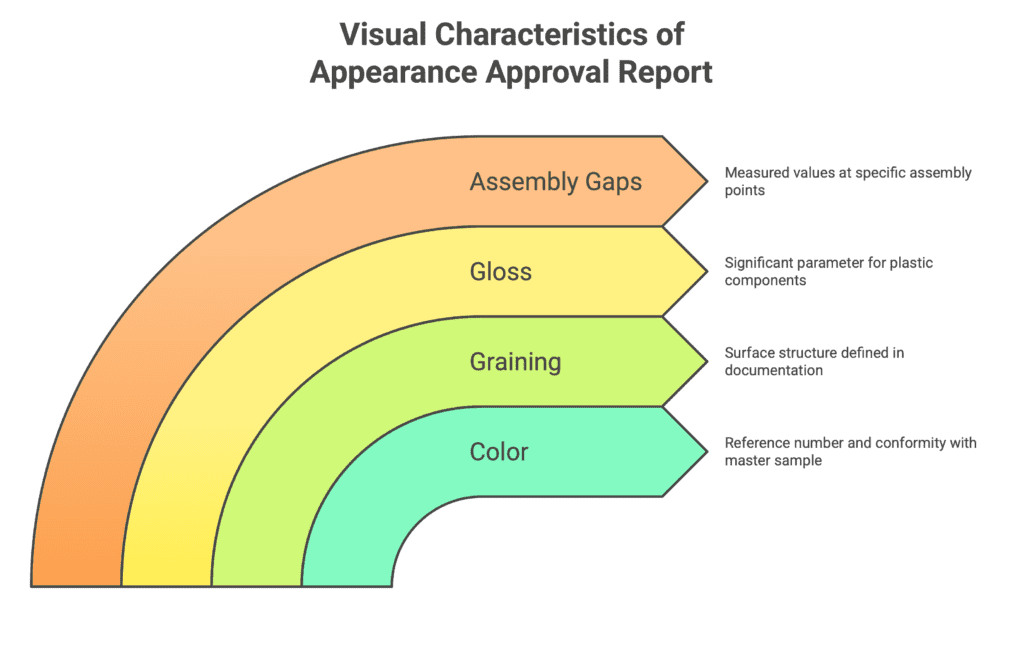Visual aspects of components play a key role in the part approval process, particularly for parts delivered to customers after SOP (Start of Production).
Color, gloss, graining and gaps between elements in the final assembly directly impact the end user’s perception. Customers spend many years in their cars, so the interior must be cohesive, and components perfectly fitted.
Appearance as a Key Factor in Purchase Decisions
One of the primary challenges in supplier-customer relationships lies in differing expectations regarding the appearance of parts and how they are perceived by the end user. Visual and tactile impressions influence the perception of vehicle quality and, in the long run, the decision to purchase another car from the same brand.
The Impact of Visual Quality on the Production Process
It is not only customers in car showrooms who assess visual quality. Quality controllers in OEM factories also play a critical role, and their subjective evaluations can lead to numerous complaints. Managing these issues—from 8D reports to customer portal metrics—generates costs and extends resolution timelines.
Appearance Approval Report (AAR): A Tool for Ensuring Visual Quality
AAR is a key element of the Production Part Approval Process (PPAP). It enables the approval of visual aspects of parts during the implementation phase of serial production. The report is based on samples produced under standard conditions, representing all possible variants of the production process.
Key Elements of the AAR
The AAR provides a detailed description of the product’s visual characteristics, including:
- Color: Reference number and conformity with the master sample.
- Graining: Surface structure defined in the documentation.
- Gloss: A parameter particularly significant for plastic components.
- Assembly gaps: Measured values at specific assembly points.

Managing the Appearance Approval Report
Each sample should be accompanied by the AAR and presented to the customer for evaluation. Once the report is approved, the master sample must be stored appropriately to avoid external influences, such as light, humidity, or temperature, which could alter its condition.
Benefits of the Appearance Approval Report
Having an approved AAR ensures a reference point throughout the product’s lifecycle. This simplifies negotiations with customers and minimizes the risk of part rejection during audits.
Strengthening Customer Relationships
A signed AAR enables factual discussions with customers, moving away from subjective impressions. This allows complaints to be addressed more efficiently and effectively.
Conclusion
The Appearance Approval Report is not just a process document but also a tool for building trust and ensuring quality in customer relationships. Proper preparation and approval of the report serve as a foundation for stable and efficient serial production.
It is essential to remember that each OEM customer requires an individual AAR tailored to the specific production facility, highlighting the importance of precision in executing this process.


